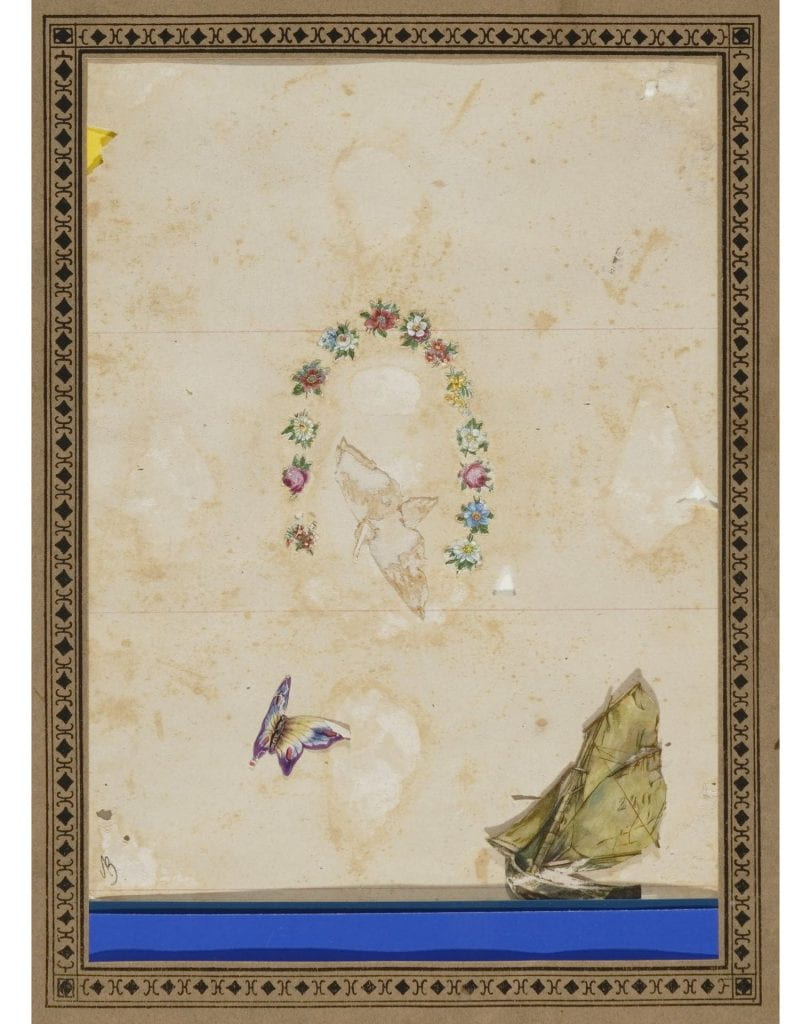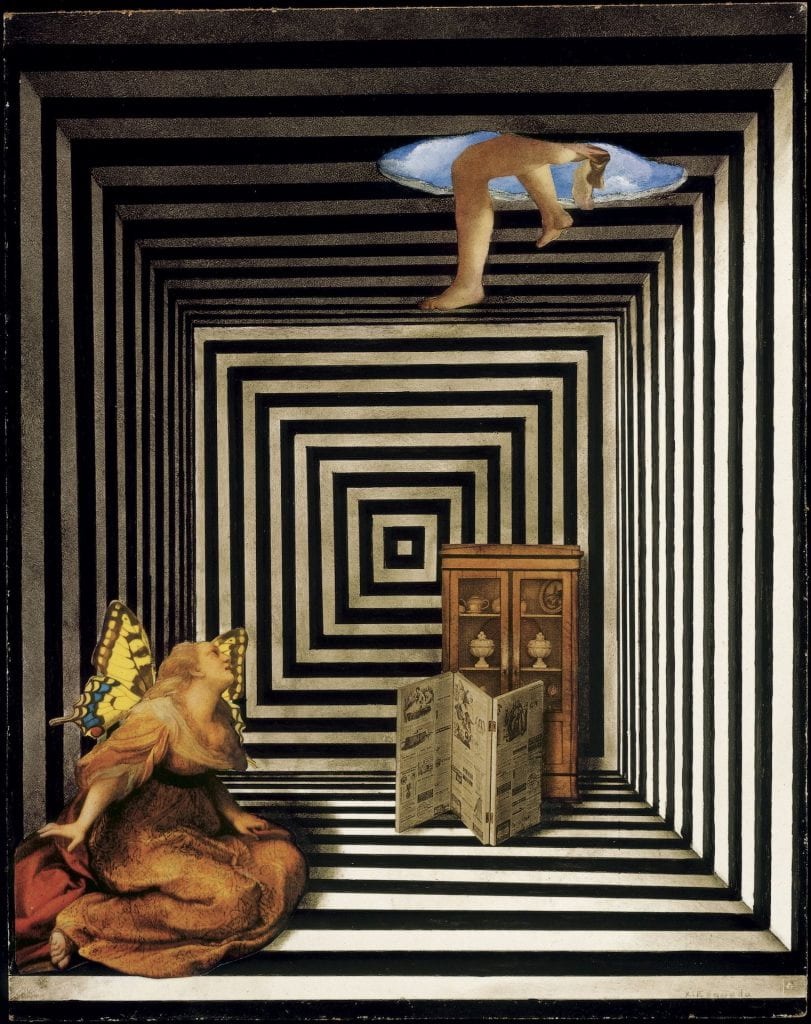If you look closely at Varujan Boghosian’s The Fall of Icarus (The Oasis) and The Fall of Icarus (For W. H. Auden), you will notice a similarity between them. Specifically, you will notice an insect—both collages feature butterflies. This is not entirely unexpected for Boghosian, who regularly used found objects such as children’s toys, hearts, fabrics, and clothes, and butterflies in his work. Despite Boghosian’s frequent butterfly use, it is significant that he chose to incorporate the paper insects into the Icarus myth twice. This significance is compounded with Esqueda’s collage The Relatives of Icarus (Los Parientes de Icaro), which also features a butterfly. But why do these artists insert butterflies into the Icarus myth, which in its traditional rendition is insect-free?
Varujan Boghosian, American, 1926–2020
The Fall of Icarus (For W. H. Auden)
1993
Construction/collage
Overall: 12 ¼ × 9 ¼ in. (31.1 × 23.5 cm)
Gift of Jane and Raphael Bernstein; 2010.84.21
These collage artists also raise questions of what it means to physically insert a new element into a myth. What happens to these butterflies when they are added to a story about a mortal flight? Do the butterflies take on a “deathlier” quality, with their own flight accruing undertones of a fatal threat—like Icarus’s flight? Or do they become more lifelike, preserving a vitality in the myth despite its tragic conclusion? As symbols of transformation, these butterflies can represent the power we have to change our stories and myths, as well as the power myths can wield to influence our perspectives and interpretations.


You must be logged in to post a comment.